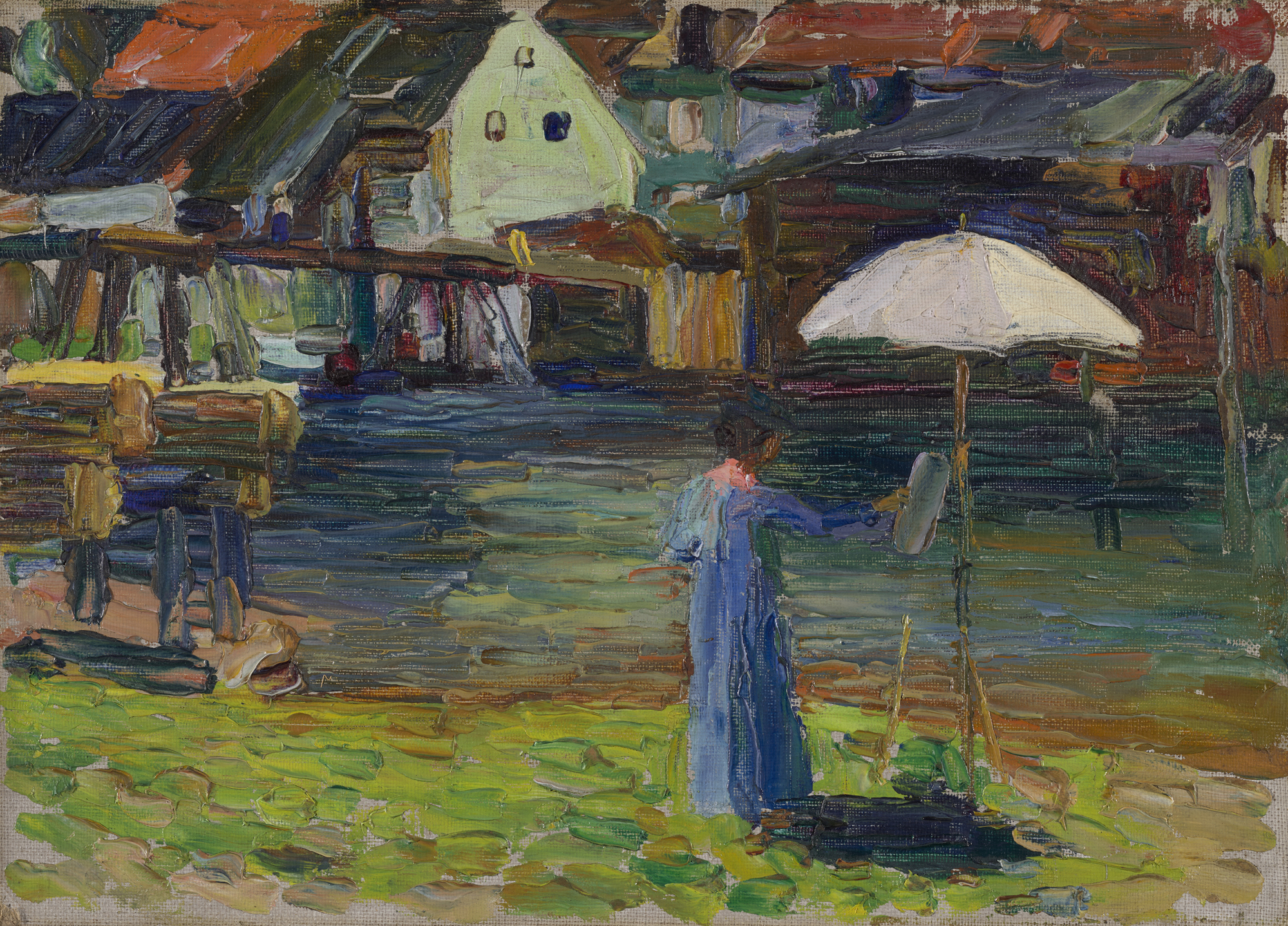Lo spirituale nell'arte, 1910
Se si osserva una tavolozza coperta di colori si hanno due risultati:
1 - Si ha un effetto puramente fisico, cioè l'occhio è affascinato dalla bellezza c dalle qualità dei colori. L'osservatore prova un senso di appagamento, di gioia come un buongustaio che gusta una squisitezza. Oppure l'occhio viene stuzzicato, come lo è il palato da un cibo piccante.
O, ancora, può calmarsi e raffreddarsi, come quando un dito tocca il ghiaccio. Sono tutto sensazioni fisiche, che in quanto tali durano poco.
Sensazioni superficiali, del resto, che non fanno molta impressione a chi è insensibile. Proprio come, se si tocca il ghiaccio, si prova solo una sensazione fisica di freddo, che svanisce quando il dito si scalda, così, girato lo sguardo si dimentica l'effetto fisico del colore.
 |
| Wassily Kandinsky | Gabriele Munter Kallmunz, 1903 |











